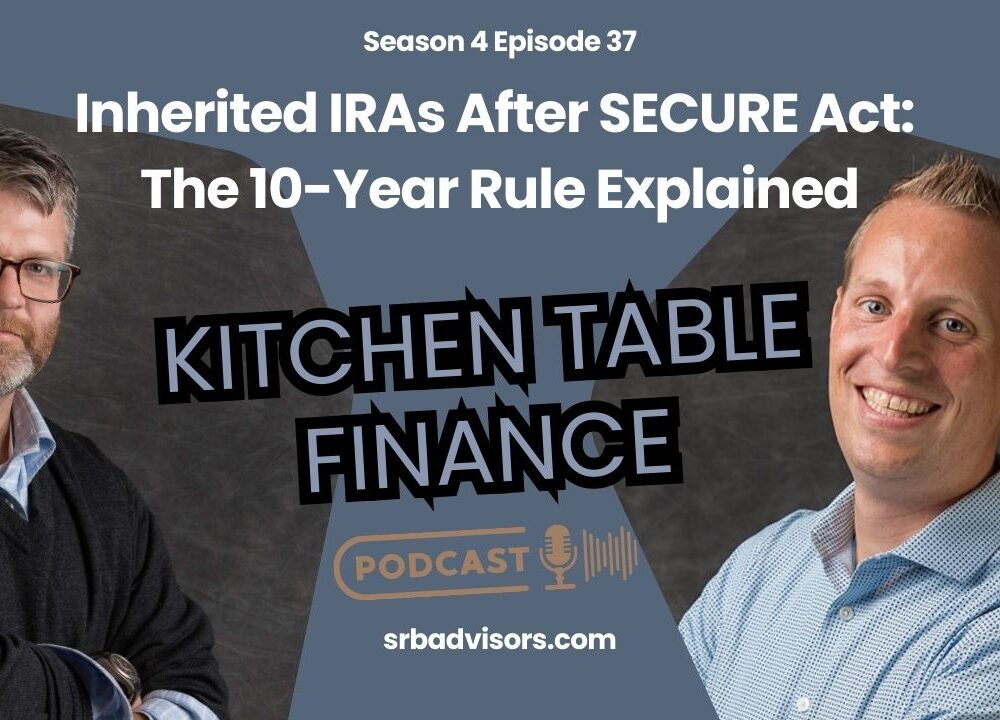Understanding Required Minimum Distributions

After you turn 70 ½ years old, you will need to take a minimum amount out of your traditional IRA accounts each year, as well as your 401k or 403b accounts if you are no longer working for the businesses sponsoring those plans. The minimum required amount, referred to as your required minimum distribution, or RMD is based on a formula provided by the IRS that changes every year based on your age. In the year you turn 70 1/2, the deadline for taking the distribution is April 1 of the following year. In subsequent years, you need to take the required minimum prior to December 31 of that year.
You can calculate your required minimum distribution amount by dividing your IRA balance on December 31 of the previous year by a number that represents your expected “Distribution Period,” which is taken from the IRS table below. For example, if your IRA balance was $100,000 on 12/31/17 and you turn 70.5 years old on 10/1/2018, you would divide $100,000 by 27.4 and your required minimum distribution for the year would be $3,649.64.
| Age | DistributionPeriod | Age | Distribution
Period |
Age | Distribution
Period |
| 70 | 27.4 | 82 | 17.1 | 94 | 9.1 |
| 71 | 26.5 | 83 | 16.3 | 95 | 8.6 |
| 72 | 25.6 | 84 | 15.5 | 96 | 8.1 |
| 73 | 24.7 | 85 | 14.8 | 97 | 7.6 |
| 74 | 23.8 | 86 | 14.1 | 98 | 7.1 |
| 75 | 22.9 | 87 | 13.4 | 99 | 6.7 |
| 76 | 22.0 | 88 | 12.7 | 100 | 6.3 |
| 77 | 21.2 | 89 | 12.0 | 101 | 5.9 |
| 78 | 20.3 | 90 | 11.4 | 102 | 5.5 |
| 79 | 19.5 | 91 | 10.8 | 103 | 5.2 |
| 80 | 18.7 | 92 | 10.2 | 104 | 4.9 |
| 81 | 17.9 | 93 | 9.6 | 105 | 4.5 |
Here are some tips for taking your Required Minimum Distributions:
- While in the year you turn 70 1/2 you can wait until April 1 of the following year to take your distribution, we advise most clients to go ahead and take the distribution before 12/31 of the year they turn 70 ½ anyway. Because the following year’s calculation is based on the 12/31 value of the previous year, delaying means that amount for the following year will be slightly bigger. Furthermore, delaying until 4/1of the following year means you will be taking two distributions in that year, as the current year’s distribution will be due by 12/31. Taking two RMDs in one year increases your taxable income for that year and may place you in a higher marginal tax bracket.
- For asset management clients, we will calculate the RMD in early January for any clients that are required to take them. No need to pull out the tables and do the math. We’ll talk to you about them during review meetings, and we’ll bug you in the fall if you haven’t made plans to take them by year end.
- The penalty for not taking your RMD by the deadline is pretty steep: The tax penalty totals 50% of any undistributed amount that you should have taken but didn’t.
- Keep in mind that the calculation is only the minimum you need to take: If you need more money than the RMD as part of your retirement plan spending, that is not an issue.
- The IRS doesn’t care how you take your distributions. You can divide them up and take them monthly, take them as a lump sum all at once, or take them in several smaller lump sums throughout the year, as long as the total at the end of the year satisfies the minimum. The IRS also doesn’t care what you do with the distributions, so long as you take the funds out of your IRA and pay the taxes that are due. Most of our clients use their required minimum distributions for spending money, but some move them into an after-tax investment account instead.
- We can have taxes withheld from your distributions to cover federal and state taxes. Prior to sending out the distribution, we can work with you and your tax advisor to calculate the proper amount of withholding.
- You will receive a 1099 – R from your IRA in early February of the following year showing how much you took out and how much you had withheld for federal and state taxes.
- If you have multiple IRAs, they are totaled together to determine your overall RMD. However, you can choose which accounts you wish to use for the distributions. As long as the overall total distributions from all your IRAs cover the total RMD, you can take the distributions all from one account, or divide them amongst the accounts as you see fit.

